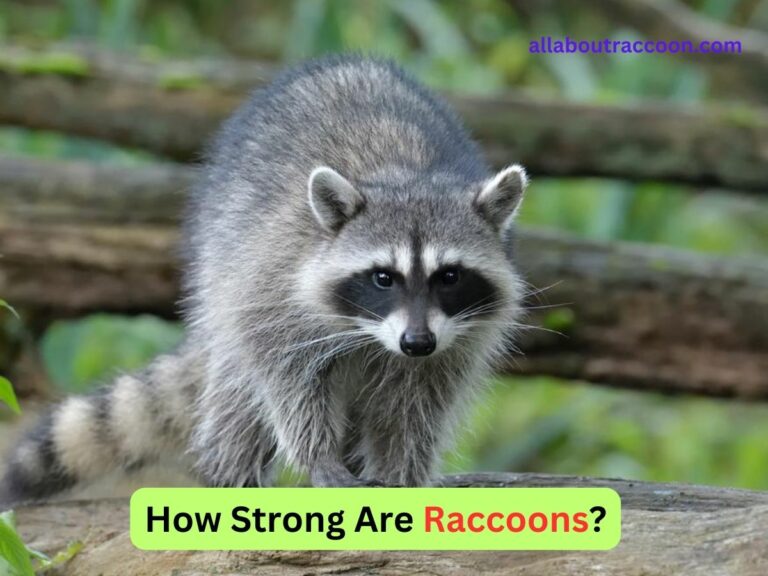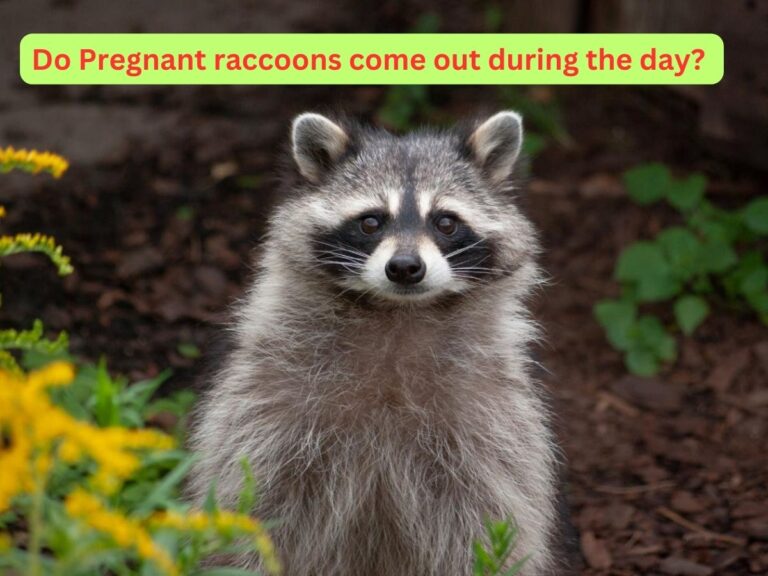Do Raccoons Live in Groups?-Social Dynamics!
Have you ever looked out into the night and caught a glimpse of those masked faces peering back at you? Raccoons are well known for their intelligent and curious nature. One burning question that often arises is, “Do raccoons live in groups?” It is an intriguing question about raccoons’ lives. So, if you want to know the exact answer, you must read this blog post.
Here you will find recently researched data about raccoons’ social life. In this blog post, I will explore whether raccoons raccoons live in groups or not. So let’s come to read to know amazing facts behind their group dynamics.
Do raccoons live in groups?
Yes! Raccoons are known to be somewhat social animals. Basically, raccoons are solitary animals and like to live alone. But rarely, they can live in loose groups or communities, especially when food resources are abundant. But overall, they are not pack animals in the traditional sense.
- In the wild, raccoons often form loose associations for various reasons, such as protection, mating, and sharing information about food sources.
- These groups are not as well organized as those of more social animals like wolves or meerkats. However, they exhibit some level of social behavior.
Female raccoons are more social than Male Raccoons:
Female raccoons tend to be more social than male raccoons, particularly when they are raising their young. They form small groups called “nursery groups”.
- In these groups, multiple females and their kits coexist in the same area for safety and support. They are likely to be friends and help each other with their babies. However, these groups are not permanent and can change over the reproduction period.
- On the contrary, male raccoons, tend to be more solitary and less likely to form long-lasting social bonds. They interact with other raccoons during the breeding season.
- Moreover, male raccoons form communities when food is abundant in their natural habitats. But remember such relations are very rare because they generally prefer to live a more independent lifestyle.
Overall, raccoons can exhibit some social behaviors and live in loose groups. In truth, their social structure is not as complex as that of truly social animals.
What is the size of raccoons’ groups?
Raccoon groups, often referred to as “nurseries,” typically consist of the mother raccoon and her litter of baby raccoons, which can range from 2 to 5 babies. So, the size of these groups typically ranges from 3 to 6 raccoons, including the mother and her offspring. Male raccoons form a group consisting of four to 5 members.
Do raccoons travel in packs?
No, raccoons do not typically travel in packs such as wolves or certain bird species. Raccoons are generally solitary animals and tend to live alone. However they like to live in small families or groups, but very rare. “The groups of raccoons are called packs”.
- Raccoons can tolerate the presence of other raccoons in their territories when readily available food resources are abundant. In such cases, you might see multiple raccoons in close to each other.
- But on the other hand, when food resources are scarce they avoid making groups. Additionally, in the breeding season, male raccoons become more aggressive and don’t let some other male raccoons in their territories.
Raccoons are adaptable and intelligent creatures, and their behavior can vary depending on factors like food availability, habitat, and social pressures. In urban environments, raccoons might be more tolerant of each other’s presence due to the abundance of food sources and shelter.
How far do they travel?
Normally, raccoons tend to stay close to their home territory when they’re looking for food or a partner. They typically don’t stray too far, but occasionally, they might travel up to 10 miles in search of food or a mate. usually, raccoons prefer to stay in their familiar area, but when it’s breeding season, they may wander around more. The male raccoons wander in search of female raccoons because they want to mate with more than one female raccoon in a breeding season.
Furthermore, in areas with abundant food sources, raccoons are seen in closer proximity to each other while foraging. It leads to loose interactions, but these are not well organized like the packs of more social species.
Overall, while raccoons are not typically considered pack animals, their social behavior can vary depending on factors such as food availability and habitat conditions.

Do Raccoons Live in Packs?
Raccoons typically live in packs like some other animals such as wolves or African wild dogs. Instead, they are more known for their solitary or loosely social behavior. Adult raccoons, especially males, are often solitary creatures, preferring to roam and forage alone. However, there can be exceptions to this behavior.
Female raccoons, especially those with young kits, may exhibit more social behavior. Mothers often raise their kits together in a common den and may tolerate the presence of other raccoons in the vicinity. This can lead to a loose association of female raccoons and their offspring.
In general, while they do not form large organized groups like some other animals, they can exhibit some level of social interaction. The chances of groups or proximity are high when food resources are abundant. Actually, raccoons are foody, so they can’t share the scarce food resources.
How many raccoons live together?
Usually, it’s not fixed how many raccoons live in groups or “packs.”
Raccoons are known to be solitary animals for most of their lives, particularly adult males. However, raccoons are not strictly solitary, and their social behavior can vary based on factors such as food availability and habitat conditions.
Female raccoons, especially those with young kits, are more likely to tolerate the presence of other raccoons and may form loose associations. In some cases, a group of raccoons share a common “den” or “forage” in the same area.
- It’s important to remember that raccoons’ social dynamics can be quite flexible, and there isn’t a fixed number of raccoons that always live together.
Raccoon family unit:
In the spring, raccoons start forming families. First, male and female raccoons find each other to mate, usually at special meeting spots. They may mate multiple times over a few nights. After mating, the pregnant female goes off on her own. The male raccoon leaves too and doesn’t help raise the babies. Usually, there are 2 to 5 baby raccoons in a litter. The mom takes care of them, creating the raccoon family.
Conclusion:
So, the question “Do raccoons live in groups?” has a resounding yes as its answer. Raccoons can sometimes live together in groups, but these groups are not very organized. They might hang out with each other to stay safe, find food, or have babies. Female raccoons are more likely to be friends and help each other with their babies. But male raccoons usually like to be alone and don’t make friends as much. So, raccoons can be social, but they’re not like animals that have big groups with clear rules.
FAQs:
The male raccoons form a group consisting of 4 to 5 members. Raccoons are less social animals. Mostly they prefer to live alone.
Generally not! However, some families of raccoons can live together when food sources are abundant. They live peacefully.
In wild areas, raccoons are more solitary than raccoons living in urban areas. In cities, raccoons are more close to each other. on the contrary in wild areas, raccoons have a density of 10-25 raccoons per square kilometer.
Yes, raccoons are known to be territorial. They make their territories for their dropping (pop and urine defection), not for reproduction purposes.







